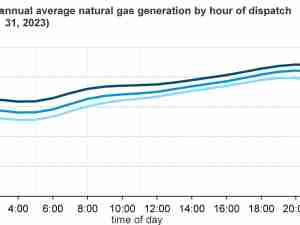Fuel oil looks overvalued ahead of Chinese demand drop
By: Reuters | Nov 11 2015 at 07:00 AM | International Trade
LAUNCESTON- What will happen to all the fuel oil that used to be bought by small Chinese refiners?
The market expectation for some time has been that the smaller, independent Chinese refiners, often referred to as teapots, will buy less fuel oil and more crude as the authorities in Beijing relax restrictions on the feedstock they are allowed to import.
From a fuel oil demand perspective, the worst fears were probably realised on Oct. 30 when the Ministry of Commerce announced that the non-state sector could import 87.6 million tonnes of crude in 2016, up from 37.6 million this year.
This means the teapots can import 240,000 barrels per day (bpd) of crude next year, up from about 103,000 bpd this year.
While a potential increase of about 137,000 bpd isn’t enough to make much of an impact on the global crude market, a reduction of that size in fuel oil imports is likely to prove more significant.
China’s fuel oil imports have already been dropping, with customs data showing an 8 percent decline in the first 10 months of the year over the same period in 2014 to 13.4 million tonnes, equivalent to about 295,330 bpd.
For the whole of 2014, fuel oil imports were 324,650 bpd, and this was a drop of 21.6 percent on 2013’s figure.
While it’s unlikely that small refiners in China will take up every barrel of their extra crude import allowance in 2016, it’s virtually certain they will choose to buy more crude.
Assuming they took up about two-thirds of the increased crude quota, or about 100,000 bpd, this could result in fuel oil imports dropping to somewhere closer to the 200,000 bpd mark in 2016, about a third below the likely level for 2015.
If China isn’t buying as much fuel oil, are there are other Asian buyers waiting in the wings?
The other main use for fuel oil is as bunker fuel for shipping, but any increase here will be dependent on improving world trade, which is possible in 2016, but unlikely to be a major driver of demand.
It is possible that complex refineries with units that can upgrade fuel oil to higher value products such as gasoil or gasoline could buy more of the residual fuel, but this would be dependent on the price being right.
PRICE HAS MORE TO DROP
The discount between Dubai crude and 180-centistoke fuel oil in Singapore has trended weaker over 2015, ending at $7.86 barrel on Nov. 9, down from a discount of $1.78 on Jan. 28, which was the strongest so far this year.
But fuel oil’s discount to Dubai still has some way to drop to match the 2014 low of $14.39 a barrel, or the 2013 low of $14.92, which was the deepest discount to the Middle East benchmark crude since the 2008 global recession.
To encourage demand in Asia, it’s likely that fuel oil prices, relative to crude, will have to decline further.
Certainly, there is plenty of fuel oil being stored in the main regional hub of Singapore, even though the amount dropped to a four-month low of 25.64 million barrels in the week to Nov. 4.
At this level, the amount is still 42 percent higher than the equivalent week last year and 52 percent greater than in the same week in 2013.
The other alternative is that fuel oil flows from West to East slow and that the product remains in Europe.
Fuel oil flows into East Asia were 5.1 million tonnes in October, a 21-month low, according to data from Thomson Reuters Oil Research and Forecasts. Of this, 3.4 million tonnes was from the West.
Apart from a blip higher in the middle of the year, which was most likely linked to an aggressive trading play in Singapore, fuel oil flows into East Asia from the West have been on a declining trend.
Fuel oil will only flow to Asia from the West when it makes economic sense, so the likely reduction in Chinese demand means the surplus will simply stay in the Atlantic basin.
This is likely to lead to cheaper prices in that region, which will boost the flows to Asia once more, but only if there is sufficient demand.
This means it’s going to get harder for the main fuel oil exporters, Russia and Iran, to find markets for their products.
For Russia, this could be the incentive needed to modernise refineries, but Iran may find it harder to follow this path, even as Western sanctions are lifted.
Overall, the weakness in fuel oil’s price relative to crude looks set to continue as Chinese demand drops and bunker fuel volumes remain hostage to the global economic outlook.

